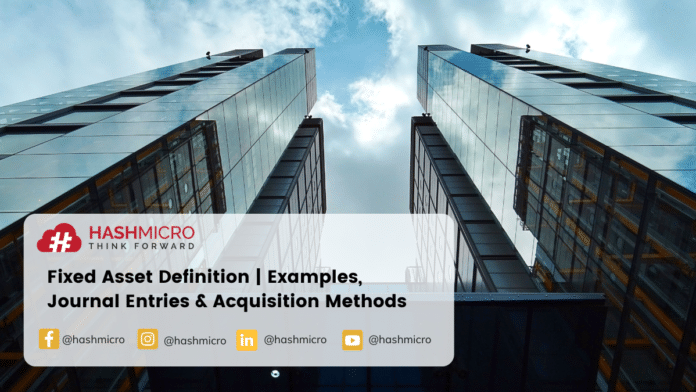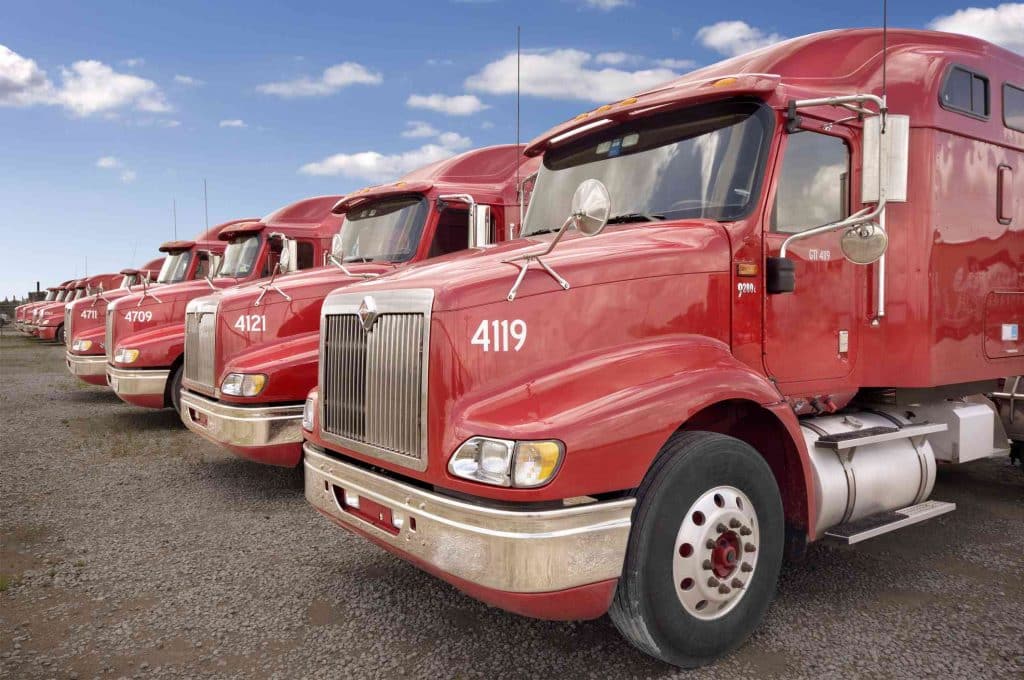Fixed Asset – Identifying and managing assets is easier with asset management software. In the world of accounting, “assets” refers to the wealth a business has when doing business. These assets are always valued and then included in the financial statements. As a result, it is important for an accountant to know about the various assets in the accounting world. Thus, an integrated asset management system can help your business automate the asset management process.
Managing the many types of assets with the complete asset tracking system is easier for companies. Various types of assets include fixed, current, and non-fixed assets. However, each asset type has its own understanding, character, and function. Furthermore, implementing the right asset management system can help manage your assets, whether fixed or non-fixed. If you are considering implementing this system, download the pricing scheme calculation beforehand to find out more.

Table of Content:
Table of Content
Property Definition
Fixed assets or property are non-current, tangible assets owned and used by a company in its operations to generate income. Therefore, a fixed asset is the company’s long-term investment.
Also, these assets are different from inventory items. Because the latter is purchased for the purpose of resale, while the former is purchased for operational purposes.
Consequently, if you think that fixed assets (items like chairs or tables) equal inventory, you’re wrong. In fact, fixed assets are an essential item for a company and are bought or rented only once in a few years.
Fixed Asset Characteristics
Acquiring fixed assets is for the purpose of producing or supplying goods or services, for leasing to third parties, or for use in the company. Additionally, the term “fixed” indicates that these assets will not be used or sold in the accounting year. Thus, it usually has a physical form and is on the balance sheet as property, plant, and equipment.
Fixed assets are initially recorded as assets, and then subject to general accounting transaction types such as:
- Periodic depreciation (for tangible assets) or amortization (for intangible assets)
- Impairment write-downs (if the value of the asset declines below its net book value)
- Disposition (once assets are disposed of)
Fixed Asset Documentations
When a company acquires or disposes of its fixed assets, this must be recorded on the cash flow statement. The purchase of fixed assets is a cash outflow to the company, while the sale of fixed assets is a cash inflow. Meanwhile, if the value of an asset falls below its net book value, the asset is impaired. The value of the fixed asset recorded on the balance sheet template is adjusted downward because it is considered too high compared to the market value.
When a fixed asset has reached the end of its useful life, it is usually sold in an attempt to obtain a residual value, which is the estimated value of the asset if it is broken down and sold in parts. In some cases, however, assets may become obsolete and unsuitable for sale. So if this happens, they will most likely be donated and the company won’t receive any payment in return. Nevertheless, whether sold or not, the fixed assets must be written off from the financial statements, because they are no longer used by the company.
Note: An asset management system can greatly help extend the lifespan of your fixed assets through automated tracking and maintenance scheduling.
If you are already interested in the best-fixed asset management software, you can start trying the price calculation offered by HashMicro by clicking the image below.
Examples of Fixed Assets
In short, here are some examples of fixed assets:
- Land
- Buildings
- Vehicles
- Factories
- Machines
- Furniture
When it comes to a fixed asset, it does not have to be something immovable. Besides, many fixed assets are portable enough to be routinely moved inside or outside of a company’s premises. Thus, a computer or a laptop can be considered a fixed asset (as long as its cost exceeds the capitalization limit).
Read the related article:
Fixed Assets & Depreciation | Accounting Principles
Fixed Asset Acquisition Methods & Journal Entries
After eventually understanding the definition of these assets, including their characteristics and examples, let’s find out how to acquire and report them on the balance sheet!
A. Throughout Cash Purchases
By acquiring through a cash purchase, a fixed asset is consequently recorded in the books with the amount of money spent on it. Moreover, the amount of money spent to acquire the fixed asset includes the price listed on the invoice and all costs incurred to make the asset ready for use.
For example:
A company buys a machine for Rp. 60,000,000, the related additional costs include VAT for Rp. 6,000,000, an insurance premium for Rp. 500,000, and an installation fee of Rp. 1,500,000.
How it is reported on the balance sheet:
| Purchase Price | 60,000,000 |
| VAT | 6,000,000 |
| Insurance Premium | 500,000 |
| Installation Fee | 1,500,000 |
| Acquisition Cost | 68,000,000 |
B. Via Credit Purchases
The acquisition cost may not include interest if a fixed asset is acquired through a credit purchase. Whether the interest during the installment period is clearly stated or not, it must be excluded from the acquisition cost and charged as interest expense.
For example:
A company buys a vehicle on credit for Rp. 300,000,000. The company partially pays Rp. 100,000,000 in cash, and pays the rest in installments in 10 months at an interest fee of 10%.
How it is written off the balance sheet:
| Vehicle Acquisition Cost | 300,000,000 |
| Cash | 100,000,000 |
| Accounts Payable | 200,000,000 |
| Installment Fee per Month (10x) | 20,000,000 |
| Interest Fee of 10% x 10 Months | 20,000,000 |
C. From Convertible Security Exchanges
A fixed asset obtained through a convertible security exchange is recorded on the balance sheet according to its stock market price. If the market price of the convertible security and the fixed asset exchanged is unknown, then the exchange value must be determined by the company leader. Furthermore, this exchange value is used as a basis for recording the acquisition cost of the fixed asset and the convertible bond.
For example:
A land with a fair market price of Rp. 400,000,000 was acquired by a company in exchange for one of its buildings. The acquisition cost of the office building according to journal entries, amounted to Rp 500,000,000 and was depreciated at Rp 200,000,000.
Therefore, how it is reported on the balance sheet:
| Land Market Price | 400,000,000 |
| The Cost of Exchanged Building | 500,000,000 |
| Depreciable Cost of the Building | 200,000,000 |
| Depreciated Cost of the Building | 300,000,000 |
| Profit | 100,000,000 |
Also Read: Avoid These 4 Problems with Asset Management System
D. Through Non-Monetary Asset Exchanges
One usually acquires fixed assets through non-monetary asset exchanges. Moreover, the old assets are used to pay for the new ones, either fully or partially, where the shortfall is paid in cash. In this case, the acquisition cost must still be included, with the new asset being capitalized at the amount of the price of the old one, added by the money (if any), or capitalized at the market price of the new asset received.
For example:
A company wants to exchange its old car with a book value of Rp 135,000,000 from the basic price of Rp 150,000,000. With the depreciable cost being Rp. 15,000,000 and the fair market price is Rp. 160,000,000, the company must pay IDR 10,000,000 in cash just for a new car at a fair market price of IDR 170,000,000.
So, how it states in the journal entry:
| The Old Car’s Fair Market Price | 160,000,000 |
| The Old Car’s Book Value | 135,000,000 |
| Unrealized Gain | 25,000,000 |
| The New Car’s Fair Market Price | 170,000,000 |
| Cash Paid | 10,000,000 |
| Book Value | 145,000,000 |
E. Through Donations
A non-reciprocal transfer (or a one-way transfer) is an asset that is acquired through a donation. However, the depreciation of a donated fixed asset is calculated in the same way as other types of fixed assets.
For example:
A company receives land with the acquisition cost of Rp. 80,000,000, but the fair market price of the land is Rp. 110,000,000.
As a result, this is how stated in the journal entry:
| Land Fair Market Price | 110,000,000 |
| Land Acquisition Cost | 80,000,000 |
| Profit | 30,000,000 |
F. Manufactured Assets
Due to certain considerations, companies often make their own fixed assets, such as buildings, appliances, and furniture. In other words, companies must allocate all costs including costs of materials, labor, and overhead. Meanwhile, overhead costs usually include electricity, insurance, equipment, and factory supervisors.
In order to make it easier for you to record the acquisition, sale, and depreciation of your fixed assets, consider using an automated accounting solution. Therefore, complete accounting software allows you to calculate, record, track, and forecast all transactions related to your assets instantly, accurately, and efficiently.
Conclusion on Fixed Asset
After knowing the definition, examples, characteristics, journal entries, and acquisition methods of fixed assets, hopefully, you can now better manage all the fixed assets in your company. In order to manage your assets accurately, HashMicro’s Asset Management Software is ready to help you. By implementing it, you can easily manage your asset depreciation, ROI, and other expenses of an asset. Furthermore, find out more by clicking here for the pricing scheme calculations.



































